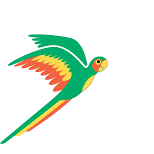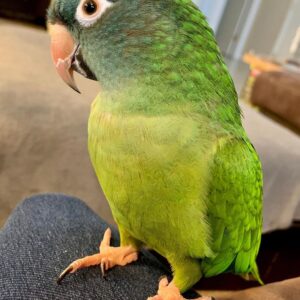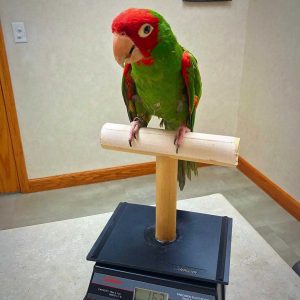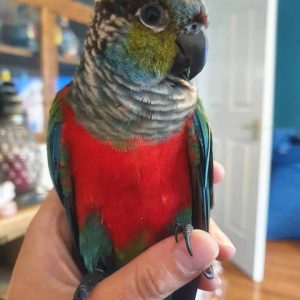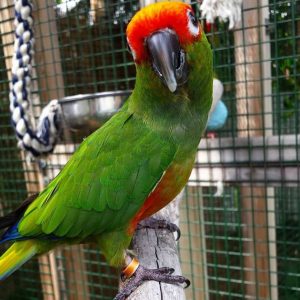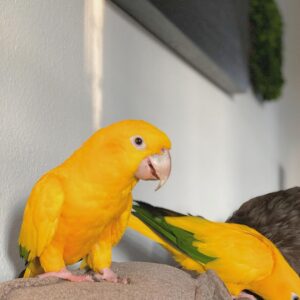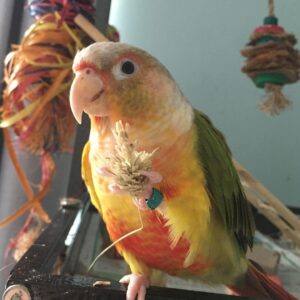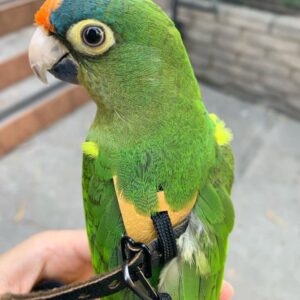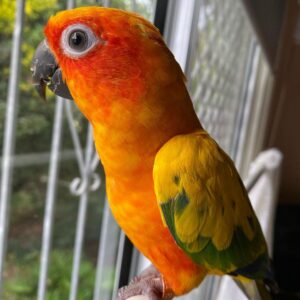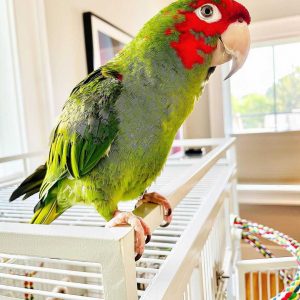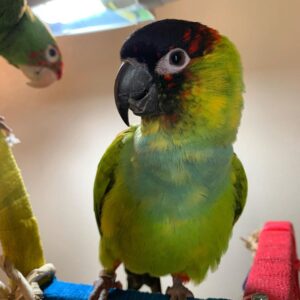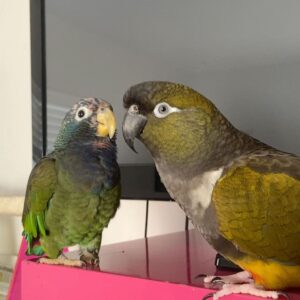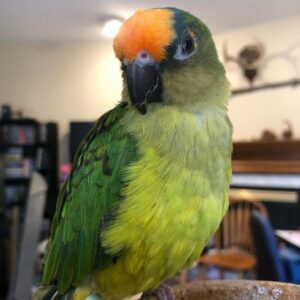Conure For Sale
Conure for sale
Conure for sale,Conures are wonderful pet birds that are members of the parrot family. The word “conure” means cone tail. Small to medium sized conure parrots are found in the new world, throughout the central and southern regions of the Americas.
Conure parrots are distinguished by their slender bodies and tapered tails, rather than having the stockier bodies and more square-shaped tails found on larger parrots. These dynamic birds are full of energy, very attractive, and make wonderful pets. Conures are very intelligent, they are enjoyed for their delightful personalities, high energy, and comical antics. Being some of the most colorful and playful parrots, they are definitely one of the clowns of the parrot world.
These parrots have all the great qualities of the larger parrots and in many ways are like miniature versions of the Macaws. They are found in many sizes and colors. Their beaks are powerful, they have large heads, and they are adorned in bright colors. They are delightful comics, acrobatic, very social, and having talents for mimicry. A Conure parrot is a good choice for those wanting to step up from a Budgie or Cockatiel but not quite ready for the commitment of a large parrot like a Macaw, African Grey, or Cockatoo.
Being very outgoing and social, a conure parrot will quickly adapt to its new environment and cage. Because they are smaller parrots, they require less space and are generally less expensive than large parrots. Depending on size, in a good environment they can live up to 15 years for a smaller conure parrot, or up to about 35 years for the larger species. They love attention and make wonderful pets, but can be very vocal.
The bird guides for each type of conure provides in-depth information about living with them.
Care and feeding of Conures
Conures are much more sedentary in captivity than in the wild so their diet should be somewhat restricted. In the wild they feed mainly on grass seeds, nuts, berries, fruits, flowers, buds, insects and grains.
Conures are active birds and need a spacious cage to move about and to accommodate toys. A minimum cage size for a conure is 36 inches long, 24 inches wide, and 24 inches high. Conures generally love to bathe — in their water dish, in the shower with their owner or via a spray bath.
A conure’s diet should include a nutritionally balanced manufactured diet, supplemented with fresh vegetables, fruit and healthy table foods. Conures have busy beaks, which makes Lafeber foods a conure favorite. Lafeber’s Avi-Cakes, Pellet-Berries and Nutri-Berries offer balanced nutrition that appeals to a conure’s chewing needs. A properly cared for conure can live between 20 to 30 years.
Training of a Conure for sale
Always handle your pet conure gently. If a person is a afraid of a bird, the bird can sense this and it can make it impossible to develop a relationship. Never hit your bird or you will loose it’s trust, probably forever.
Taming Basics:
To train you pet, the first thing you should do is have it’s wings clipped. A bathroom is a good area for working with your conure to train it. Be sure to cover the mirrors, have the windows closed and covered and the door closed.
Always reward good behavior and each success with loving praise and a treat. Some treats are a cracker, fruit such as a piece of grape, or a nut. Repeat the hand-taming lessons several times a day but for short periods of time, about 20 minutes a session.
Initial Training:
Place the conure on a perch. If it insists on flying off, pick it up and replace it on the perch until it becomes use to the perch and is comfortable with it.
The next step is to take a second perch and gently push into your pet’s chest to encourage it to step up on it. Sometimes offering a treat to coax it up on the perch as it reaches for the treat will help.
Once it steps up without hesitation, you can then substitute your finger for the perch. If your conure tries to bite, you can blow on it and it will soon learn to behave.
Advanced Training:
These are very bright birds and love learning tricks. Some of the tricks you can teach it to do are to play dead, lay on its back, and even pick up objects and bring them to you. Your conure can also learn to talk with patience and persistence.
Temperament
The conure (for sale) is a playful, amusing bird that enjoys athletic tricks. These birds are smart, interactive, and easily trained. In general, it is a very affectionate and cuddly bird that is gentle to all members of the family as long as it’s treated well. The bird is not without assertiveness, though; it can turn aggressive suddenly if provoked.
This parrot can go through nippy phases that can be hard on children as well as on adults. Even the tamest pet bird can get startled and bite. This is not a true reflection of its personality; it’s a natural reaction.
Like all parrots, conures are social birds that need a considerable amount of interaction with their human owners to be happy. They are naturally playful and affectionate when they get the attention they need, making them uniquely suited for those who want a bird for steady companionship.
Maintenance
The basic cage care includes daily cleaning of the water and food dishes. Weekly you should wash all the perches and dirty toys. The floor should be lined with newspaper and changed daily, or covered with an absorbent bedding such as corn cobs or pine shavings and changed weekly. A total hosing down and disinfecting of an aviary should be done yearly, replacing anything that needs to be freshened, such as old dishes, toys and perches.
Habitat
Size of Habitat
Give your bird as much space as possible. One green-cheek or similar-sized conure requires a minimum habitat size of 24″ W x 24″ D x 30″ H, with metal bars no more than 3/4″ apart. Commercially available habitats are typically made of stainless steel bars (either with or without a nontoxic coating); homemade habitats, as well as those made of wood or galvanized wire, are not recommended because wood cannot be properly disinfected and birds can chew on their habitats and ingest potentially toxic chemicals.
Colors and Markings
Males and females have identical coloring. Green-cheeked conures display an array of colors in their plumage, sporting bright red feathers in their tails and on their chests, bright green on their backs and the tops of their wings, olive green surrounding the red patch on their chest, a whitish ring around the neck, black plumage on the head, and olive green patches on their cheeks. Their long pointed tail is mostly blue or maroon. They have black beaks and feet and display bare white rings around their eyes.
Showing 1–12 of 15 results
-
$700.00 – $1,700.00
-
$500.00
-
$600.00 – $1,400.00
-
$500.00
-
$1,000.00 – $2,200.00
-
$380.00 – $950.00
-
$300.00 – $750.00
-
$400.00 – $950.00
-
$600.00
-
$400.00 – $1,000.00
-
$500.00 – $1,200.00
-
$250.00 – $600.00
